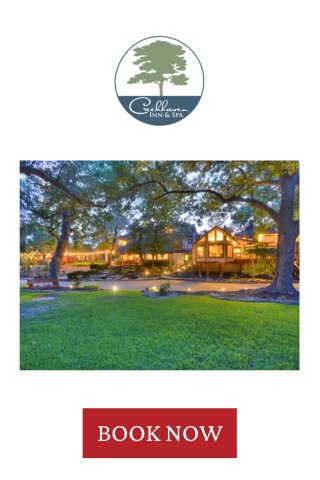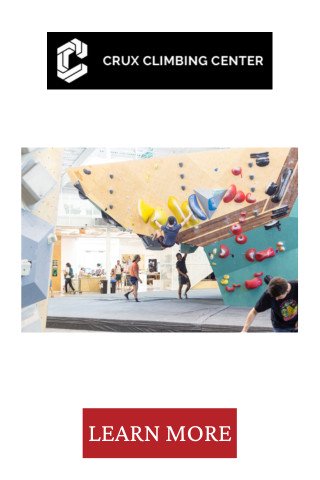Once Austin’s Airport, Mueller Is Now a Model for a Walkable, Sustainable Community
Mueller’s transformation from runway to neighborhood shows how cities can grow with intention and community at heart
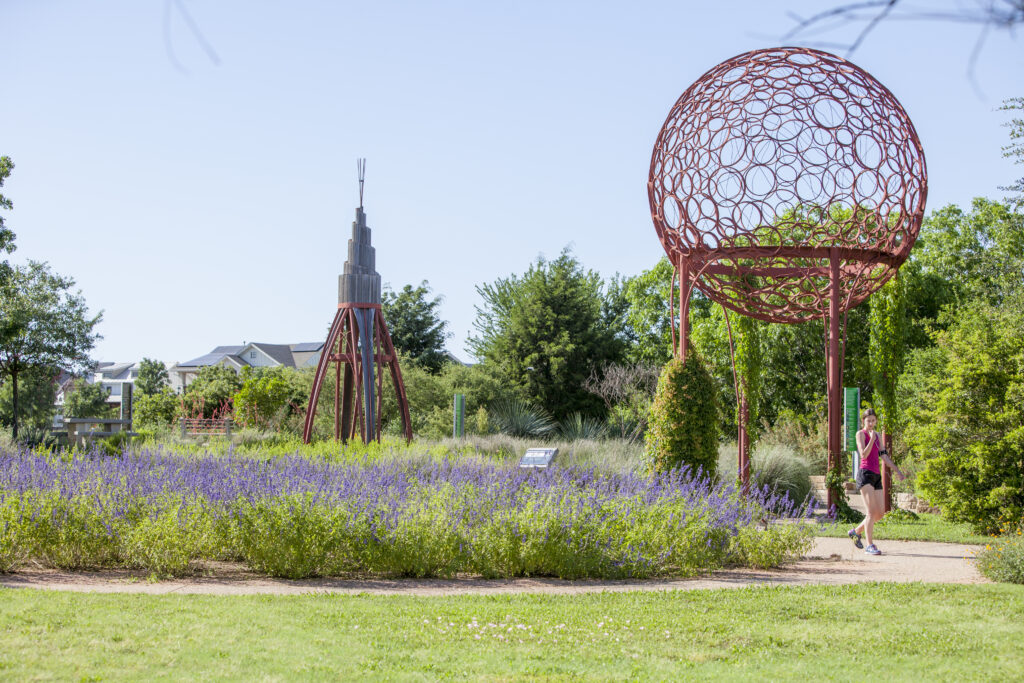
Before it became one of Austin’s most walkable, park-filled neighborhoods, Mueller was home to the city’s airport. Built in 1930 and expanded in 1961 with its now-iconic blue and white control tower, the Robert Mueller Municipal Airport served Austin for nearly seven decades before operations moved to Austin-Bergstrom International Airport in 1999. On its final night, local dignitaries boarded a jet for a ceremonial flight to the new airport, marking the end of one era and the beginning of another.
What followed were decades of planning, debate and grassroots involvement. Today, Mueller is a 700-acre urban village shaped by community vision, where families can walk to run errands and spend weekends biking trails or browsing the farmers market.
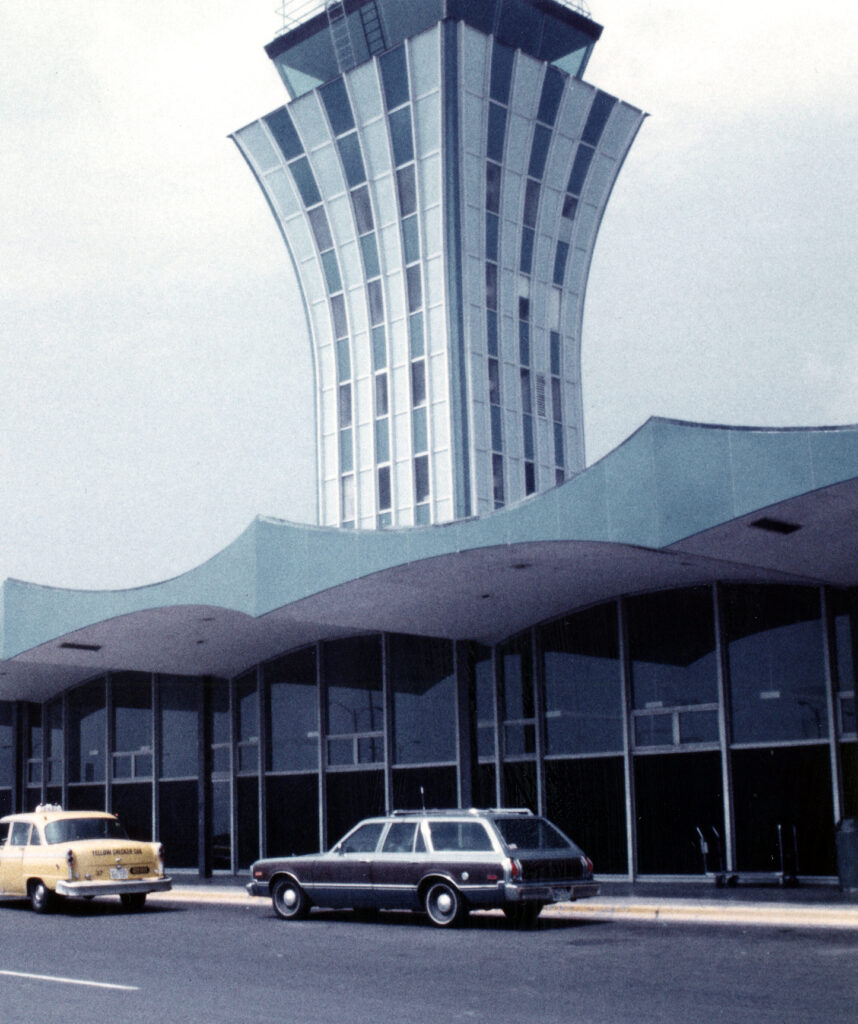
A community-driven vision
Even before the airport closed, nearby residents had already started reimagining the site’s possibilities. The 1984 Citizens for Airport Relocation (CARE) plan laid the groundwork, and by the late ’90s, the Mueller Neighborhood Coalition formed to ensure community voices were part of the planning process.
By 2002, Catellus Development Corporation was named master developer. The first homes were built less than a decade later. Since then, Mueller’s growth has followed a long-term vision rooted in walkability, sustainability and public space.
Holiday Gift Guide
Shruti Babu moved to the neighborhood with her husband and two daughters 16 years ago, when many of its features were still theoretical. What has emerged, she says, has exceeded expectations.
“For me personally, it’s the location and the walkability,” she says. “I mean, I walk to the grocery store, the Thinkery, restaurants, the movie theater.”
According to the community’s website, every home in Mueller is within 600 feet of a park or greenspace. With more than 140 acres set aside for parks and open areas, Mueller has prioritized public land in a way that’s rare for urban developments.

Design that builds connections
The physical layout — porches facing sidewalks, homes clustered tightly together — isn’t just about design. It’s about encouraging neighborliness.
During the early days of the pandemic, Babu says the neighborhood’s design helped her feel connected, even while staying physically distant.
“I literally send a group text to the block like, ‘Anyone wanna come out on the front porch?’ and they come out,” she says. “One person would have music, everyone would have wine, and then we just kinda sit and face each other with our chairs.”
It wasn’t the first time neighbors had rallied around her family. After her family faced a series of hardships, the community organized gift baskets and handwritten signs of encouragement.
“They all pulled together,” she says. “The people are so wonderful.”
Colin Rowan, who moved to Mueller in 2022 after his daughters left for college, says the layout encourages frequent interaction with neighbors.
“It’s a tightly packed neighborhood, and so you see a lot more of your neighbors than you might see in different parts of the city,” he says. “There’s incredible ethnic diversity in the younger generation here. We see people from all over the world … it is the kind of diversity that I think we should be shooting for.”
Mueller was built with an affordability component, including income-restricted housing. According to Mueller’s website, these homes are available to buyers earning up to 80% of the area median income and renters earning up to 60%.
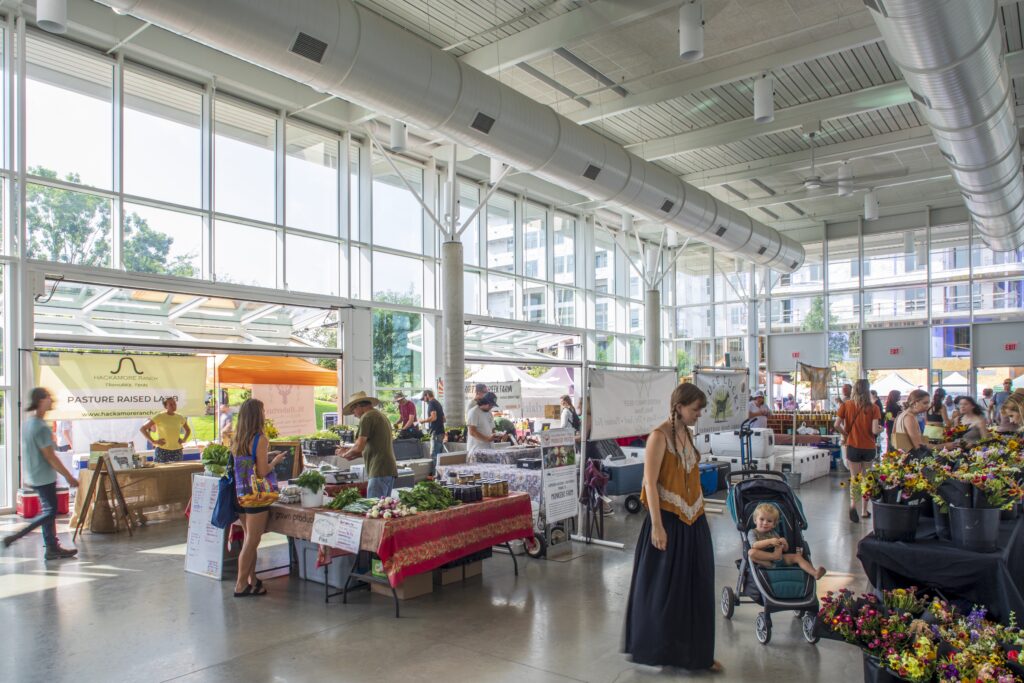
A testbed for sustainability
In 2018, the U.S. Green Building Council named Mueller one of the largest LEED for Neighborhood Development projects in the world. The neighborhood includes rooftop solar systems, reclaimed water irrigation and infrastructure made from recycled airport materials.
It also became home to the Pecan Street Project, a non-profit research initiative studying energy use at the residential level.
“Many of them will tell you that over the course of the year, they’ve sent more power to the grid than they’ve used,” says Rowan, who works with the project. “Their solar panels have more than compensated for their total annual energy use.”
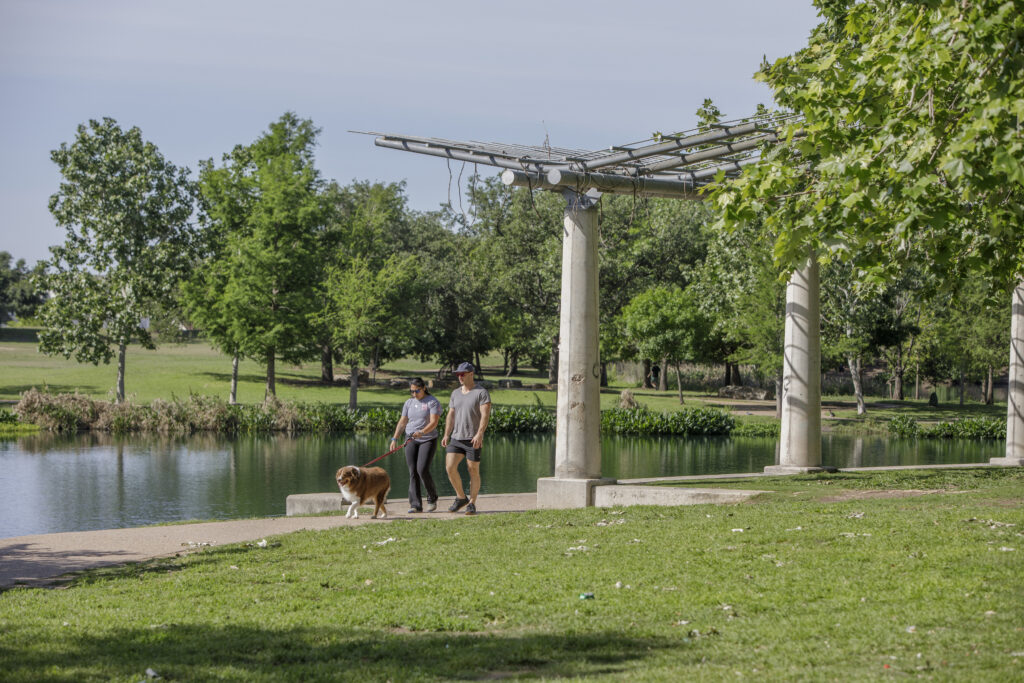
Living well
For longtime resident John-Michael Cortez, the layout has had an unexpected benefit: health. “The walkability, the great trails for running, biking. It’s allowed me to stay, as I’ve aged, relatively healthy,” he says.
The amenities support that lifestyle. Mueller includes nine parks, five public art installations, sports courts, three ponds for fishing and viewing wildlife, a skate park and two neighborhood pools. At the center is Aldrich Street, home to restaurants and retail.
“The kids sometimes like to make it to the Thinkery, see what they have going on there,” Babu says. “We have the playgrounds, we walk around the lake… Every Sunday, you can probably find us at the farmers’ market. We walk everywhere.”
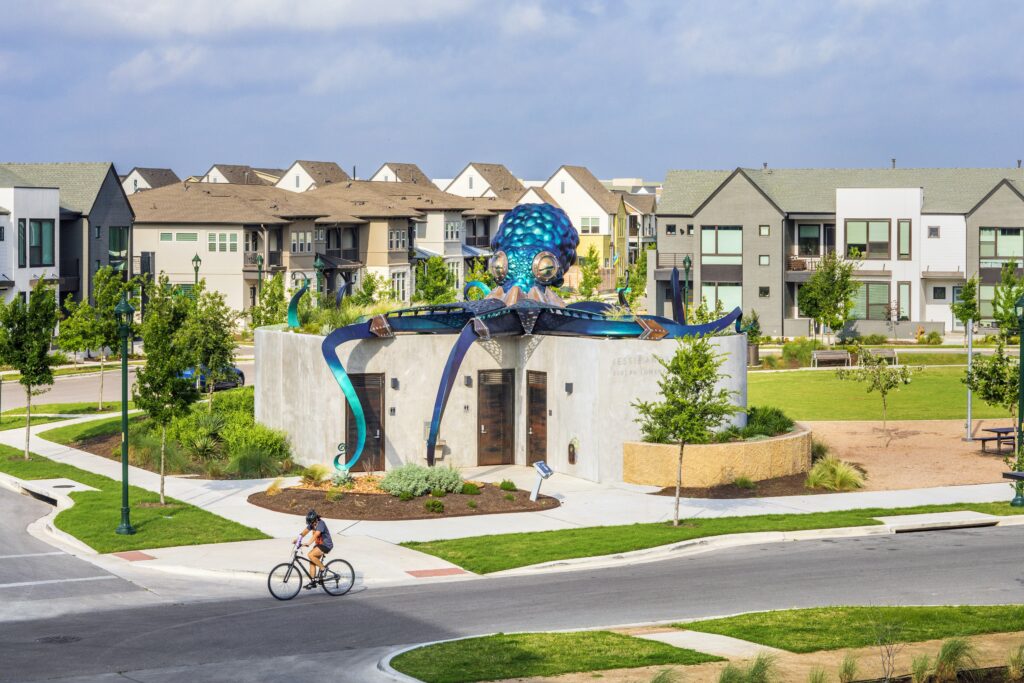
What comes next
A second project shaped by Mueller’s legacy is underway about six miles east. The Colony Park Sustainable Community, developed by the city and Catellus, recently broke ground on 208 acres in East Austin. It will eventually include 3,000 homes, a Central Health wellness center and parks and offices, with a focus on affordability and access.
“We’ve learned a lot about park amenities that people love and enjoy and park amenities that are difficult to maintain,” says Jessica Guerra Reynolds, vice president of marketing at Catellus. “So all of those lessons learned from Mueller will be moved over to Colony Park and hopefully just make it better.”
Back in Mueller, the vision that started on the pages of early planning documents continues to unfold in daily life.
“We thought we’d stay five years,” Babu says. “But just last year, I was like, ‘Hey, I don’t see myself ever living in downtown Austin anymore.’ And my husband said the same thing. So we remodeled the house and decided this is where we’re retiring. We have a front porch, a porch swing, a little white picket fence — everything we’ve ever wanted is right here.”
RELATED: Austin’s Iconic Houseboat Sets Sail on a New Chapter




